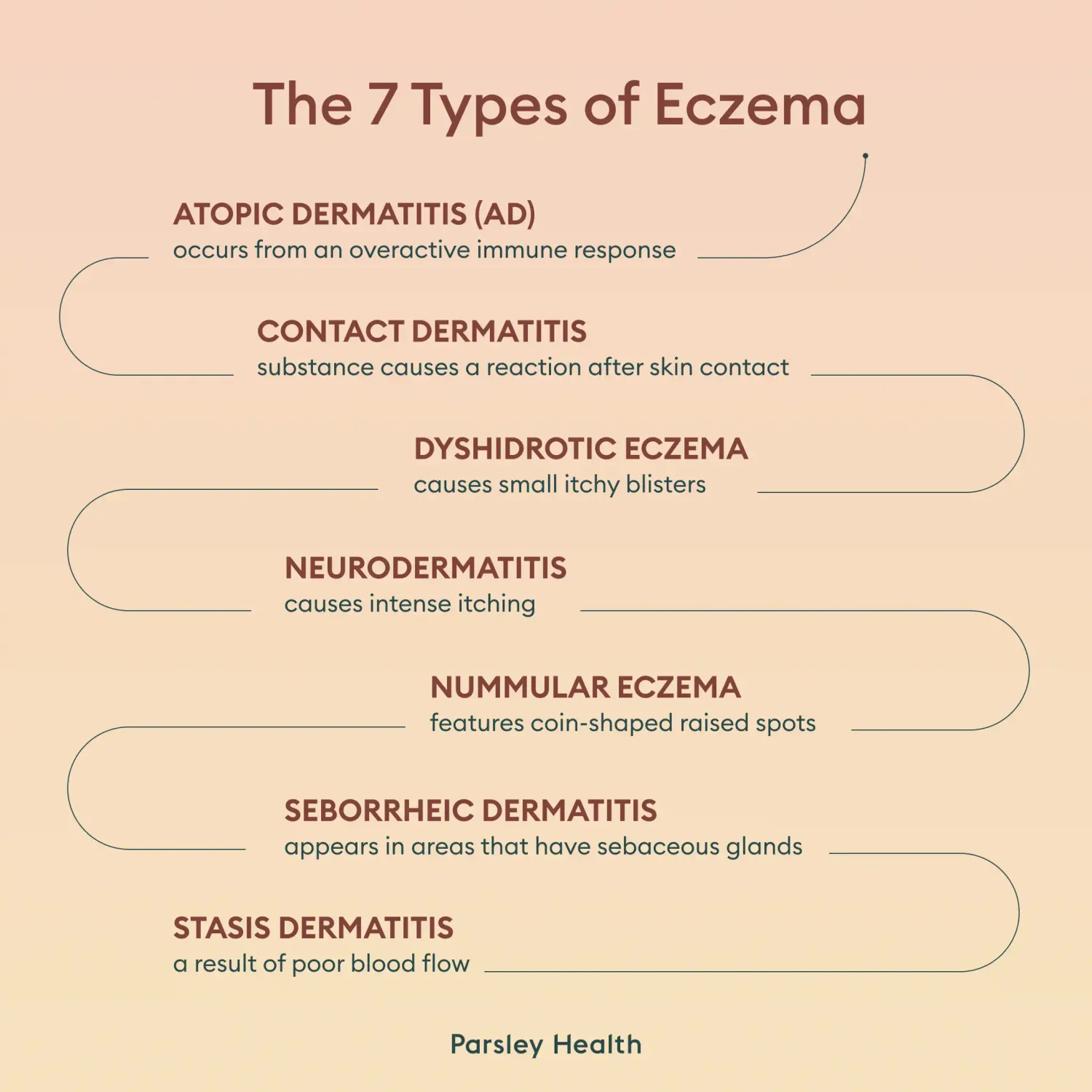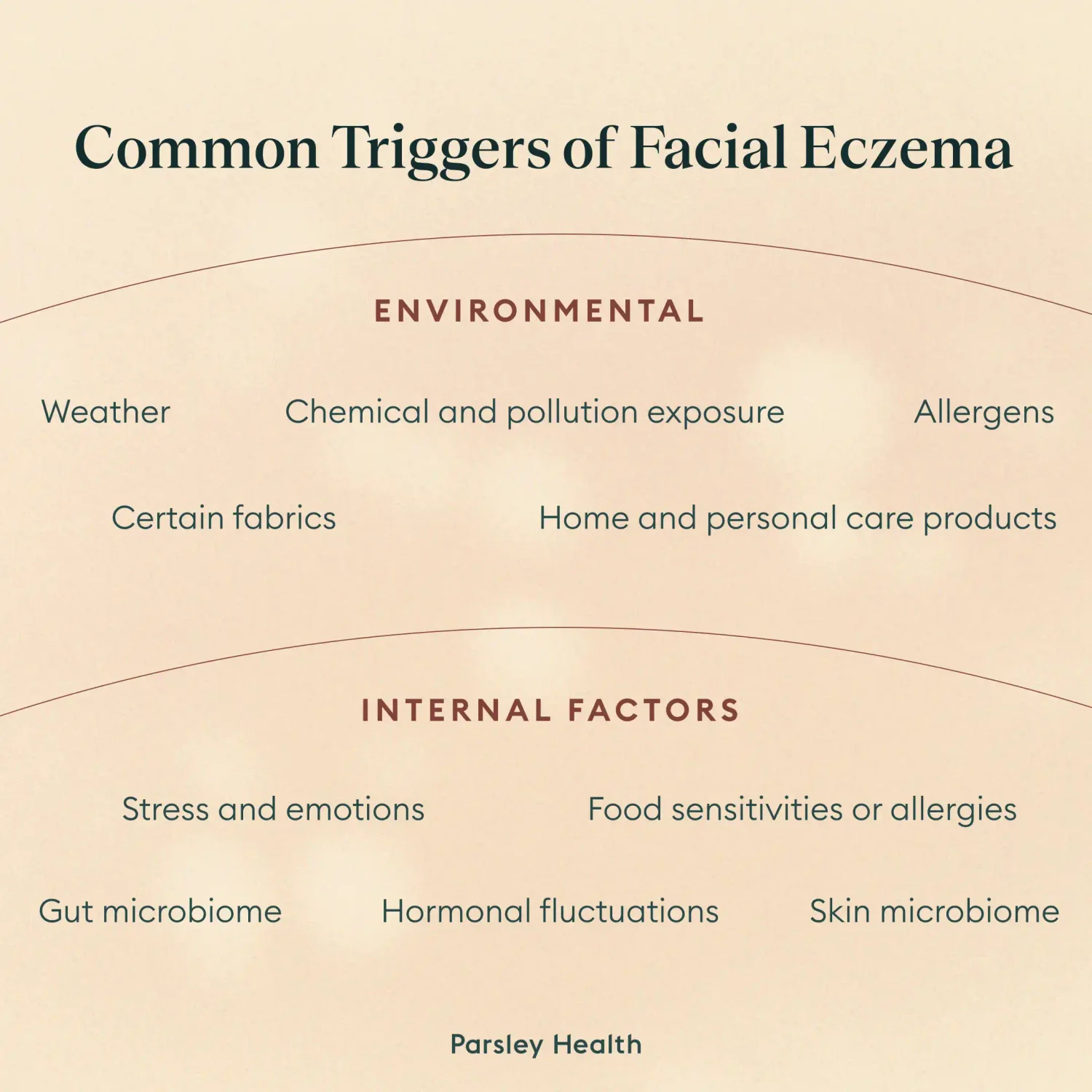Facial eczema is simply eczema that occurs on your face. It involves the same frustrating host of symptoms, such as itching and irritation, and the same triggers that are common with bodily eczema. However, eczema on the face can present additional challenges because skin tends to be more sensitive and exposed to more triggers.
Inflamed, itchy, flaky, irritated skin is frustrating no matter where it crops up. But when eczema shows up on your face, your frustration meter can skyrocket. Facial eczema can be uncomfortable, sure, but it can also tank your confidence and be more complicated to treat.
“One key challenge with facial eczema is the emotional toll it takes because it's so visible,” says Shamsa Kanwal, MD, a consultant dermatologist with myHSTeam. “Patients often experience lowered self-esteem and social anxiety, especially during flares.”
She adds, “The skin on the face is also more delicate and sensitive than other areas, which limits the use of certain medications and requires a more cautious, tailored approach.”
Eczema doesn’t have a cure, according to the National Eczema Foundation. But treatments can offer you clearer skin and fewer flares and can liberate you from itching and flaking.
Taking a functional medicine approach that addresses your facial eczema contributors and triggers may help. Functional medicine investigates and treats root causes rather than taking an approach that only masks symptoms.
In this article, we’ll explore what potentially causes eczema, common triggers for face eczema, functional medicine approaches to treating the condition, and more.
Understanding facial eczema
To unpack the nitty-gritty of facial eczema, we have to dig into what eczema is in the first place and how facial eczema differs from eczema elsewhere.
What is eczema?
Eczema is really an umbrella term for a group of inflammatory skin conditions that cause skin irritation, such as itching, burning, flaking, oozing, and red, purple, gray, or brown patches, depending on your skin tone.
7 types of eczema
- Atopic dermatitis (AD) occurs from an overactive immune response that drives inflammation that damages the skin barrier.
- Contact dermatitis occurs when a substance causes irritation or an allergic reaction during or after skin contact.
- Dyshidrotic eczema causes small itchy blisters, usually on the hands and feet.
- Neurodermatitis causes intense itching. It usually appears in just a few thick patches on the body, and it may affect the eyelids. Excessive scratching can cause lesions that damage nerves.
- Nummular eczema features itchy and inflamed coin-shaped raised spots.
- Seborrheic dermatitis appears in areas that have sebaceous glands (glands that produce sebum, aka oil), including the face, scalp, and neck. A common trigger for this type is an overgrowth of a yeast that lives on the skin.
- Stasis dermatitis is generally a result of venous insufficiency (poor blood flow) in the lower extremities, leading to water and blood cells pooling in the lower legs, causing them to swell and become discolored.
How is facial eczema different from eczema elsewhere?
You can have any of the seven types of eczema, or multiple types that overlap, and some types of eczema may affect your face.
Facial eczema is the same as eczema that appears elsewhere, but it shows up on your cheeks, around the mouth, around the eyes, and in the nasolabial folds, and more. And it can present challenges.
- Visibility: Our faces are our most visible parts, so when eczema strikes, it can affect self-confidence and mental health.
- Texture and sensitivity: Facial skin tends to be more delicate and sensitive than skin on most other parts of your body, which can worsen irritation and make treatment more complex.
- Skin microbiome: The facial skin microbiome differs from the body’s skin microbiome, and it may be more prone to eczema exacerbations.
- Environmental exposure: Because of increased environmental exposure (e.g., pollution and ultraviolet radiation) and other factors, facial skin can lose more moisture, which could compromise the skin barrier, leading to eczema flares.
- Products: We tend to use more products on facial skin (e.g., cosmetics and skincare items), which could irritate already inflamed skin.
- Co-occurring conditions: Other skin conditions—such as acne and rosacea, melasma, actinic keratosis, vitiligo, psoriasis—also commonly affect facial skin, and these conditions may require different treatments from those of eczema and may cause additional irritation.









